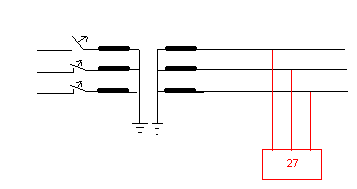- This topic has 5 replies, 1 voice, and was last updated 2 years, 11 months ago by .
-
Topic
-
Voltage transformers are occasionally used to adapt voltage protective relays and instruments with nominal voltage of main circuit in low voltage switchgears.
In an electrical panel test program an interesting thing was observed. In the panel a three phase voltage transformer with following technical characteristics was used to adapt one 110 V AC under voltage relay with main bus bar voltage.Voltage Ratio: 380/110 V
Connection: YnYn
Rated power: 60 VA
Construction: Core type
Accuracy class: 3P

The under voltage relay was three phase and microprocessor base made by an authentic company.
The acceptance tests on the individual relay were done successfully, but the under voltage relay in combination with voltage transformer didn’t have suitable reflection against actual one phase under voltage in primary system that was simulated by removing one of three phase fuses in primary side of the voltage transformer.(Really, no under voltage was observed by the relay.) All wire interconnections and related circuits also voltage transformer was rechecked again and every thing was very well. The relevant test men couldn't explain the reason of behavior of circuit. It seemed that interface circuits or devices didn’t work correctly.How can you explain the reason of non activity of that protection system against primary under voltage?
Viewing 5 replies - 1 through 5 (of 5 total)
Viewing 5 replies - 1 through 5 (of 5 total)
- You must be logged in to reply to this topic.
